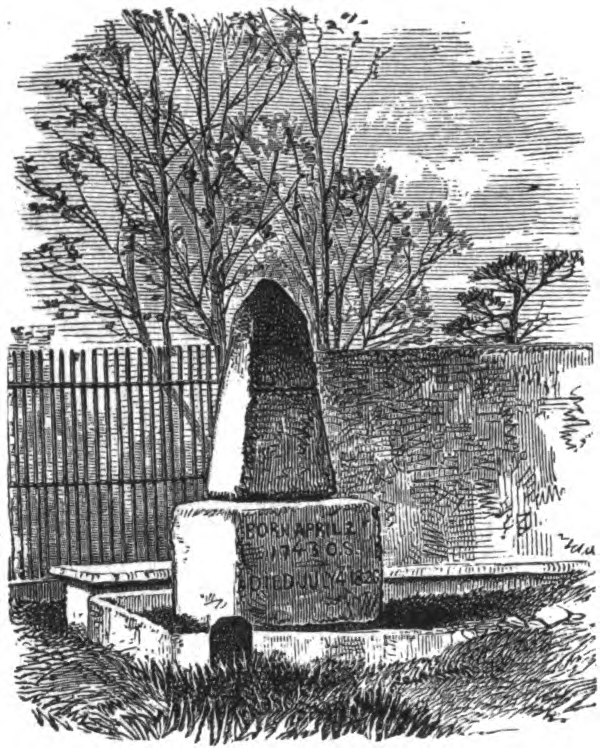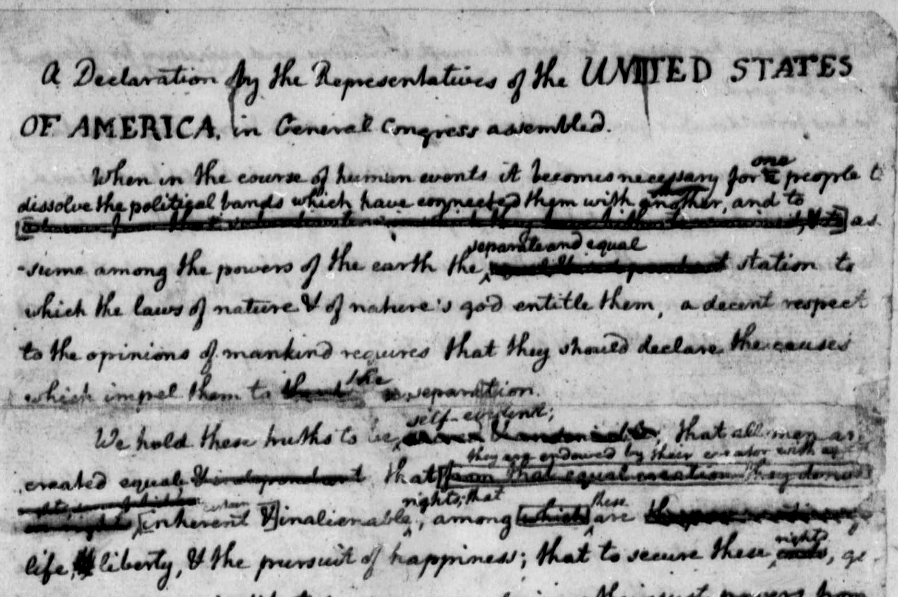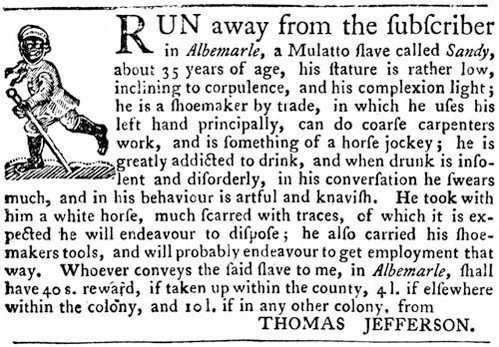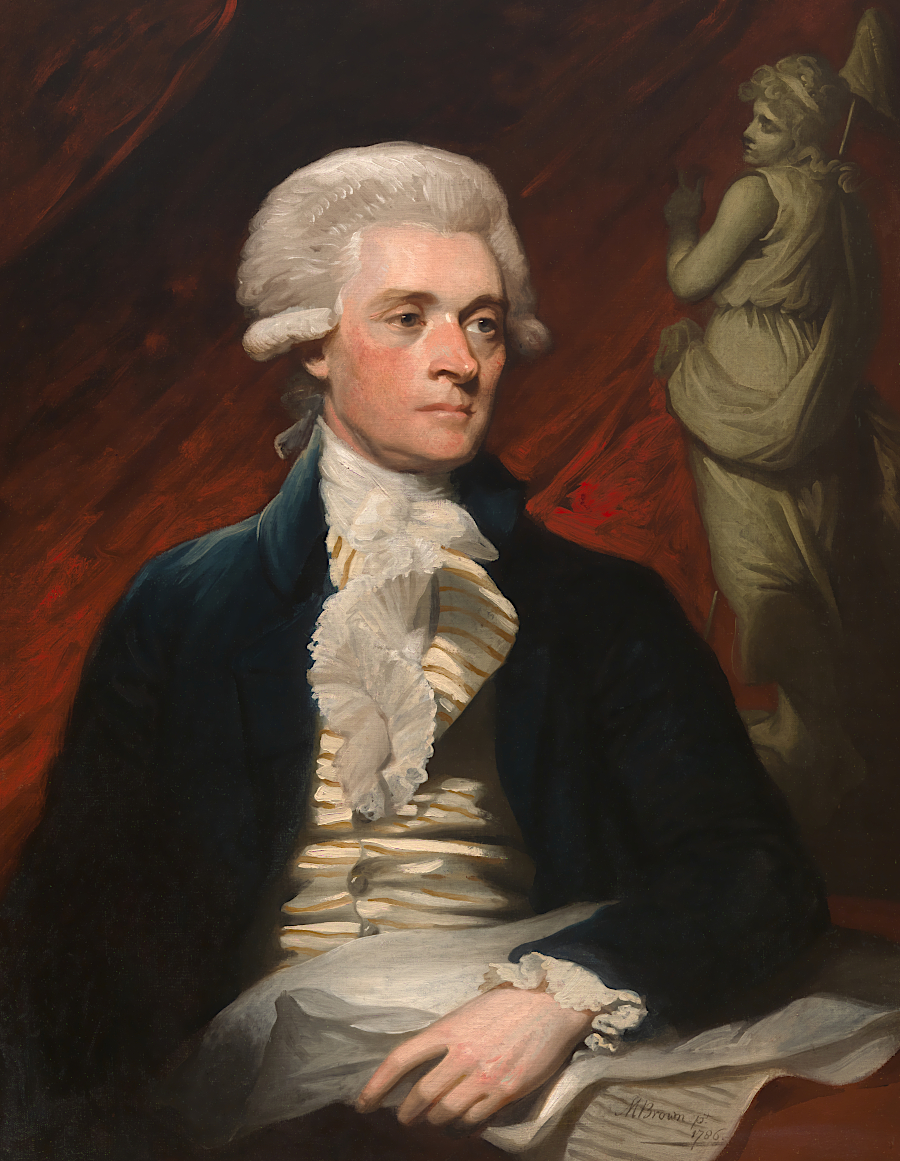
the monument at Thomas Jefferson's tomb, 1881
Source: "The Chesapeake & Ohio Railway Directory, Containing an Illustrated History and Description of the Road," Tomb of Jefferson (p.240)
Thomas Jefferson chose to be remembered for three items when he ordered engraved on his tombstone:1
Despite his instructions, the words were inscribed on a marble slab that was placed next to a granite shaft installed at his grave in 1833. Jefferson's dates of birth and death were carved on the granite. Visitors seeking a memento of Jefferson chipped off pieces of the tombstone. In 1836 the new owner of Monticello, Uriah Phillips Levy, moved the marble slab to the house for safekeeping.
After Levy died, Monticello was largely abandoned for 20 years as heirs disputed the directions in his will to donate Monticello for non-profit use. During that time, including the Civil War, more damage occurred to the granite shaft.
What visitors to Monticello see today is a replacement funded by the US Congress and installed in 1883. The original granite obelisk is at the University of Missouri.1

the monument at Thomas Jefferson's tomb, 1881
Source: "The Chesapeake & Ohio Railway Directory, Containing an Illustrated History and Description of the Road," Tomb of Jefferson (p.240)
The original draft that Jefferson prepared for the Declaration of Independence ended up being altered 86 times before final adoption by the Continental Congress on July 4, 1776.2

Thomas Jefferson's original draft of the Declaration of Independence was edited by Benjamin Franklin, John Adams, and others
Source: Library of Congress, Thomas Jefferson, June 1776, Rough Draft of the Declaration of Independence

Thomas Jefferson was a slaveowner as well as an advocate for personal liberty, creating a complex contradiction between his thoughts and behavior
Source: Encyclopedia Virginia, Thomas Jefferson Advertises for Runaway Slave

Thomas Jefferson was in France when the General Assembly approved the Virginia Statute for Religious Freedom in 1786
Source: Smithsonian Institution Thomas Jefferson (by Mather Brown, 1786)